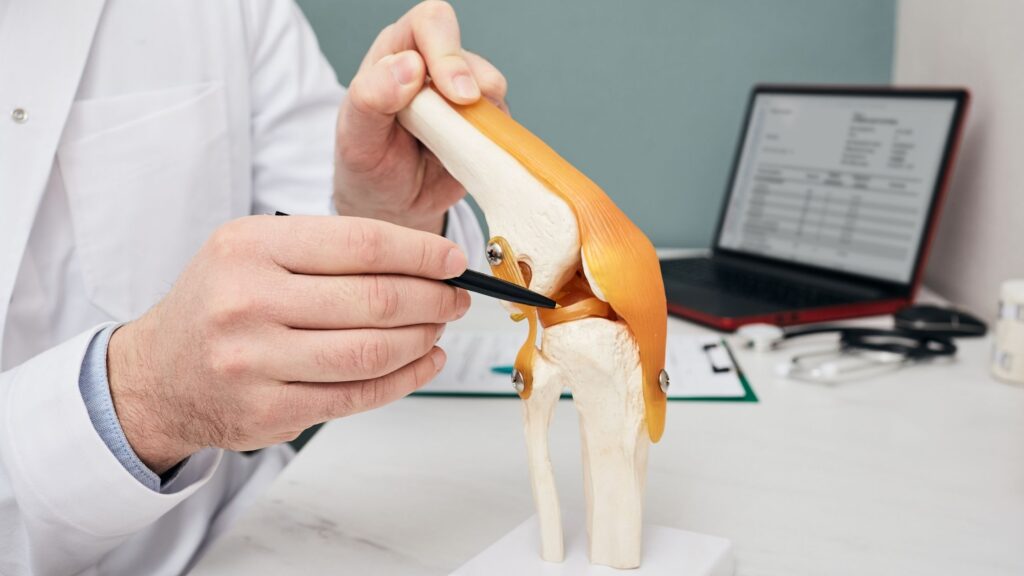Whether you’re an athlete, a weekend warrior, or simply twisting awkwardly while stepping off a curb, a torn meniscus is one of the most common knee injuries—and one of the most misunderstood. While some tears can heal with rest and rehabilitation, others may require surgery to fully restore knee function and relieve pain.
So how do you know which path is right for you? In this post, we’ll explain the different types of meniscus tears, how they’re diagnosed, and when surgery is—or isn’t—the best option. If you’re searching for meniscus tear treatment in New York or looking for a knee pain doctor near me, you’re in the right place.
What Is the Meniscus and How Does It Tear?
The meniscus is a c-shaped piece of cartilage that cushions and stabilizes your knee joint. Each knee has two menisci—one on the inside (medial) and one on the outside (lateral). These structures act like shock absorbers between your thigh bone (femur) and shin bone (tibia).
Meniscus tears are typically caused by:
- Sudden twisting or pivoting motions (common in sports like soccer, basketball, or skiing)
- Age-related wear and tear (degenerative tears)
- Heavy lifting or squatting, especially with poor mechanics
Symptoms may include a “popping” sound at the time of injury, swelling, stiffness, pain when rotating or squatting, and the sensation of the knee “locking” or “catching.”
Can a Meniscus Tear Heal on Its Own?
The answer depends on the type, size, and location of the tear:
🔹 Tears That Often Heal with Rehab:
- Small tears located on the outer edge (called the “red zone”), where there is better blood supply
- Stable tears that don’t cause mechanical symptoms like locking or instability
- Degenerative tears in older adults, which may respond well to non-surgical care
Non-surgical treatment typically includes rest, anti-inflammatory medications, activity modification, and physical therapy to strengthen the muscles supporting the knee.
In these cases, improvement can occur within 6–8 weeks. However, ongoing pain or swelling beyond that point may suggest the need for further evaluation.
When Is Meniscus Surgery Recommended?
Surgery is usually recommended when:
- The tear is large, complex, or located in the inner “white zone” (which has poor blood supply)
- You experience mechanical symptoms like locking, catching, or frequent giving way
- Rehabilitation has failed to relieve symptoms after several weeks
- The tear occurs alongside other injuries, like an ACL tear
Types of Meniscus Surgery:
- Meniscectomy: Removal of the damaged portion of the meniscus (more common in degenerative tears)
- Meniscus Repair: Stitching the torn pieces together—used more often in younger patients or athletes
Both procedures are typically performed arthroscopically (through small incisions using a camera), resulting in faster recovery and minimal scarring.
Recovery After Meniscus Treatment
🟢 If Treated Conservatively:
- Return to normal activity within 6–8 weeks
- Focus on strength, flexibility, and movement control in physical therapy
🔵 If Treated with Surgery:
- Meniscectomy: Recovery in 3–6 weeks
- Meniscus Repair: Recovery in 3–5 months (due to the time needed for healing)
- Post-op physical therapy is critical for regaining motion, strength, and function
Your recovery timeline and return to sports will depend on the type of surgery and your individual health and activity goals.
When to See a Knee Specialist
If you’re still experiencing knee pain, clicking, or instability a few weeks after an injury—or if your symptoms are interfering with your ability to stay active—it’s time for an orthopedic consultation in New York.
Early diagnosis can help prevent long-term damage and ensure you get the right treatment before the problem worsens.
Expert Meniscus Tear Care in New York
As a fellowship-trained orthopedic surgeon, I specialize in diagnosing and treating meniscus injuries with both non-surgical and surgical options tailored to each patient’s needs. Whether you’re an athlete or just want to get back to walking without pain, we’ll find the best solution together.
📞 Call my office at 516-524-0000 or visit briancapognamd.com to schedule a consultation.
People Also Ask
Can a meniscus tear heal without surgery?
Yes, especially if the tear is small, located in a well-vascularized area, and not causing mechanical symptoms. Physical therapy can often restore function.
What is the recovery time for meniscus surgery?
Recovery varies: meniscectomy patients may return to activity in 3–6 weeks, while meniscus repair patients typically need 3–5 months.
What happens if a meniscus tear is left untreated?
Untreated tears can lead to chronic pain, instability, or arthritis over time, particularly if they cause repeated joint trauma.
How do I know if I need surgery for a torn meniscus?
If you have persistent pain, locking, or instability after trying rehab, or your MRI shows a complex tear, surgery may be the best option.

